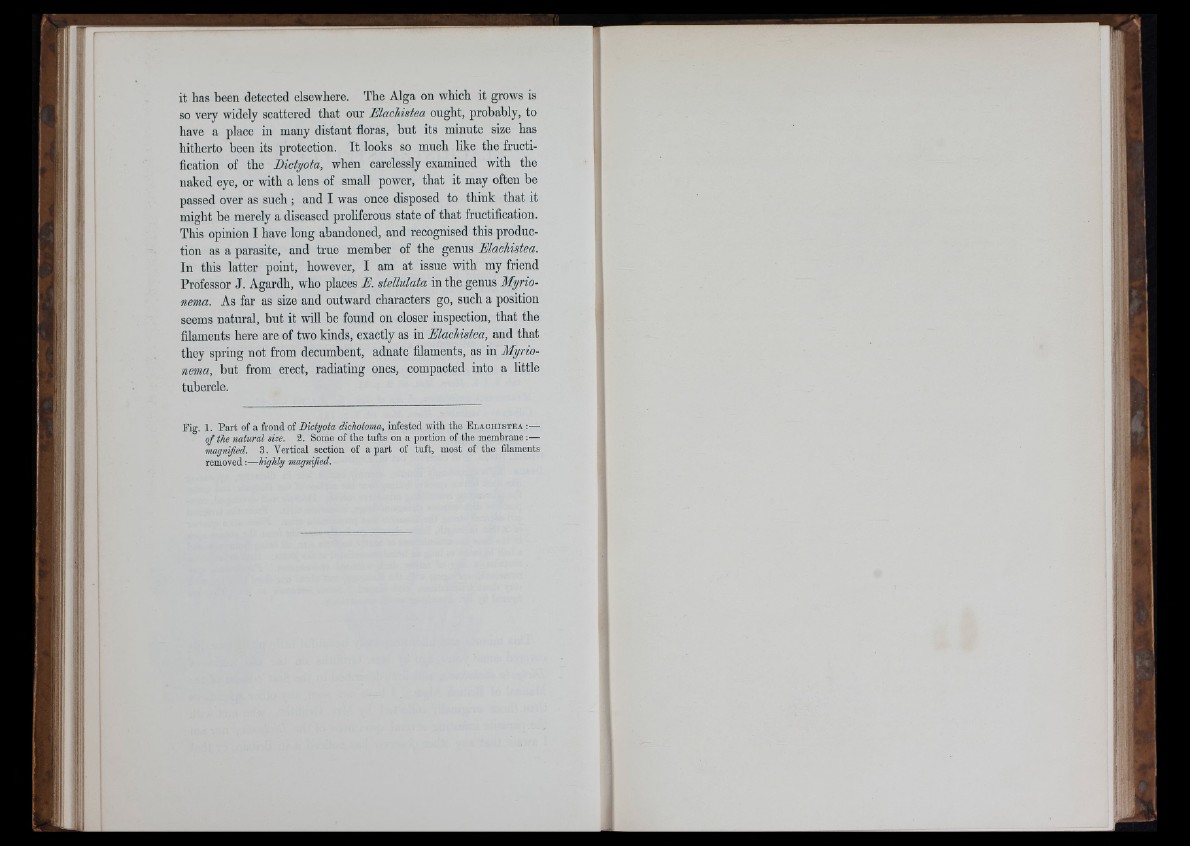
it has been detected elsewhere. The Alga on which it grows is
so very widely scattered that our Elachistea ought, probably, to
have a place in many distant floras, but its minute size has
hitherto been its protection. It looks so much like the fructification
of the Dietyota, when carelessly examined with the
naked eye, or with a lens of small power, that it may often be
passed over as such ; and I was once disposed to think that it
might be merely a diseased proliferous state of that fructification.
This opinion I have long abandoned, and recognised this production
as a parasite, and true member of the genus Elachistea.
In this latter point, however, I am at issue with my friend
Professor J. Agardh, who places E. stellulata in the genus Myrio-
nema. As far as size and outward characters go, such a position
seems natural, but it will be found on closer inspection, that the
filaments here are of two kinds, exactly as in Elachistea, and that
they spring not from decumbent, adnate filaments, as in Myrio-
nema, but from erect, radiating ones, compacted into a little
tubercle.
Fig. 1 . Part of a frond of Dietyota dichotoma, infested with the E l a c h is t e a
o f the natural size. 3. Some of the tufts on a portion of the membrane ;■—
viagnified. 3. Vertical section of a paid of tuft, most of the filaments
removed:— highly mag